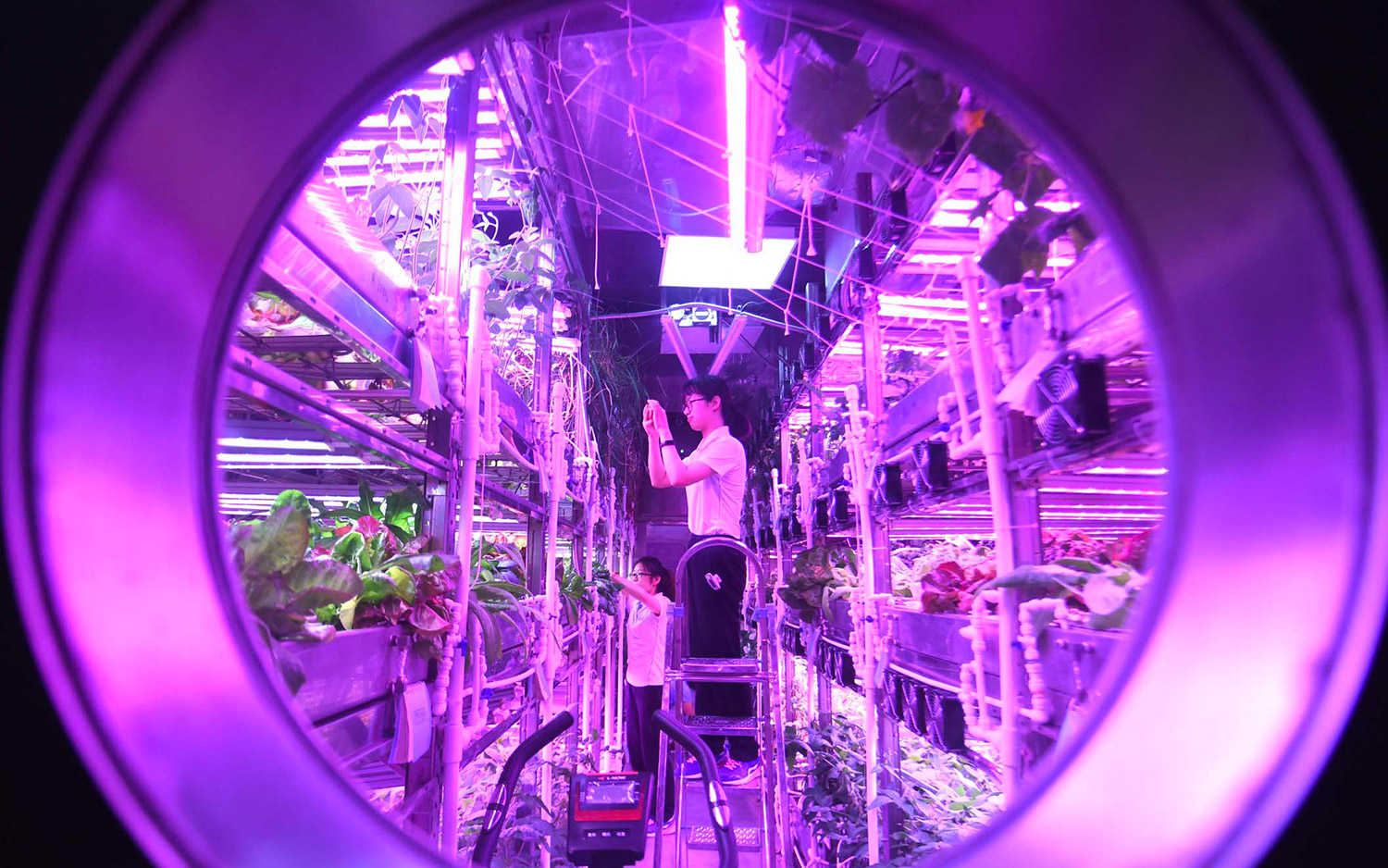
China Wraps Up 1-Year Mock Moon Mission to Lunar Palace 1

Chinese student volunteers completed a one-year test living in a simulated space lab in Beijing yesterday (May 15), setting a record for the longest stay in a self-contained facility.
That test started on May 10, 2017, inside the Yuegong-1 ("Lunar Palace 1") facility at Beihang University and lasted 370 days, according to China's state-run Xinhua news agency. The yearlong trial consisted of three phases; the last of these, which lasted 110 days, wrapped up yesterday.
Liu Hong, chief designer of Yuegong-1, said the test marked the longest stay in a bioregenerative life support system (BLSS), in which humans, animals, plants and microorganisms co-exist in a closed environment, simulating a lunar base. Oxygen, water and food are recycled within the BLSS, creating an Earth-like environment. [See more photos of China's Lunar Palace 1 mock moon base]
Eight student volunteers took turns living in the cabin, which measures around 1,600 square feet (150 square meters). The BLSS is a critical piece of technology required for long-term human stays on the moon or other extraterrestrial bodies, Liu said.
New starting point

Yuegong-1 consists of two plant cabins and a comprehensive cabin. Liu said the BLSS system had functioned well over a long time; the experiment also allowed researchers to explore the mechanisms by which light affects people's emotions and biological rhythms. Scientists also improved technology for vertical planting, the Xinhua story said. "This is not the end, but a new starting point to continue to explore space," Liu said, according to Xinhua.
Researchers will evaluate the physical and mental conditions of the volunteers, study test results and explore smaller BLSS equipment, which could be loaded onto space labs and moon and Mars probes in the future.
"The test has important implications for human endeavors to achieve long-term stays outside Earth. The experience, technology and findings will be conducive for future space exploration efforts," said Wang Jun of the Chinese Academy of Engineering, Xinhua reported.
Get the Space.com Newsletter
Breaking space news, the latest updates on rocket launches, skywatching events and more!
Construction on Yuegong-1 began in March 2013. The facility was unveiled in January 2014, and it was commissioned just before its first mission, a 105-day experiment that started in February 2014.
Leonard David is author of "Mars: Our Future on the Red Planet," published by National Geographic. The book is a companion to the National Geographic Channel series "Mars." A longtime writer for Space.com, David has been reporting on the space industry for more than five decades. Follow us @Spacedotcom, Facebook or Google+. This version of the story published on Space.com.
Join our Space Forums to keep talking space on the latest missions, night sky and more! And if you have a news tip, correction or comment, let us know at: community@space.com.

Leonard David is an award-winning space journalist who has been reporting on space activities for more than 50 years. Currently writing as Space.com's Space Insider Columnist among his other projects, Leonard has authored numerous books on space exploration, Mars missions and more, with his latest being "Moon Rush: The New Space Race" published in 2019 by National Geographic. He also wrote "Mars: Our Future on the Red Planet" released in 2016 by National Geographic. Leonard has served as a correspondent for SpaceNews, Scientific American and Aerospace America for the AIAA. He has received many awards, including the first Ordway Award for Sustained Excellence in Spaceflight History in 2015 at the AAS Wernher von Braun Memorial Symposium. You can find out Leonard's latest project at his website and on Twitter.









